What Distracts Us?
It's 7:00 am, and the steam from your coffee frames the glow of your laptop. You are at your desk, mentally preparing for the day ahead. You have your to-do list saved as a tab on your computer, your television is off, and you have decided to get some work done before you get lost in your email inbox. The first hour goes off without a hitch since most of your clients are only now getting into their offices. Unfortunately, the productivity bliss ends at 8:30 am. Your smartphone buzzes with email notifications, phone calls, text messages, calendar reminders, and the occasional social media alert.
These distractions aren't all that is vying to take your attention away from your work. You begin using a search engine to start researching for a project, and you come across a news story that causes you to take the bait. You think, "How can reading one article impact my productivity?" So, you take a break, and after 45 minutes you now find yourself on Facebook scrolling for more news on your Timeline. You feel a pang of guilt as these distractions along with the consistent ping of your emails reminds you that you face unique challenges regarding distractions as a remote worker.
If you think you're alone, know that you aren't. According to Buffer's 2018 State of Remote Work Report, 16 percent of remote workers felt that "distractions at home" were the third largest struggle of working from home. So, dealing with distractions is a significant component of any remote worker's day. Here is data regarding other disturbances that can take center stage during the typical workday:
- More than a third of millennials spend two or more hours looking at their smartphones during the workday, while 62 percent of all age groups spend an hour a day looking at their phones.
- The average worker spends 28 percent of the workweek reading and responding to email. It takes 64 seconds to recover from an email and resume working at the same rate.
- Facebook is a major distraction for the average worker as 65 percent of respondents to a Udemy Workplace Distraction Survey cited the social media site as the number one online distractor.
- More than a third (39 percent) of individuals who work from home often work additional hours to complete their tasks. While this is not strictly a distraction, it can lead to burnout which is a significant killer of productivity.
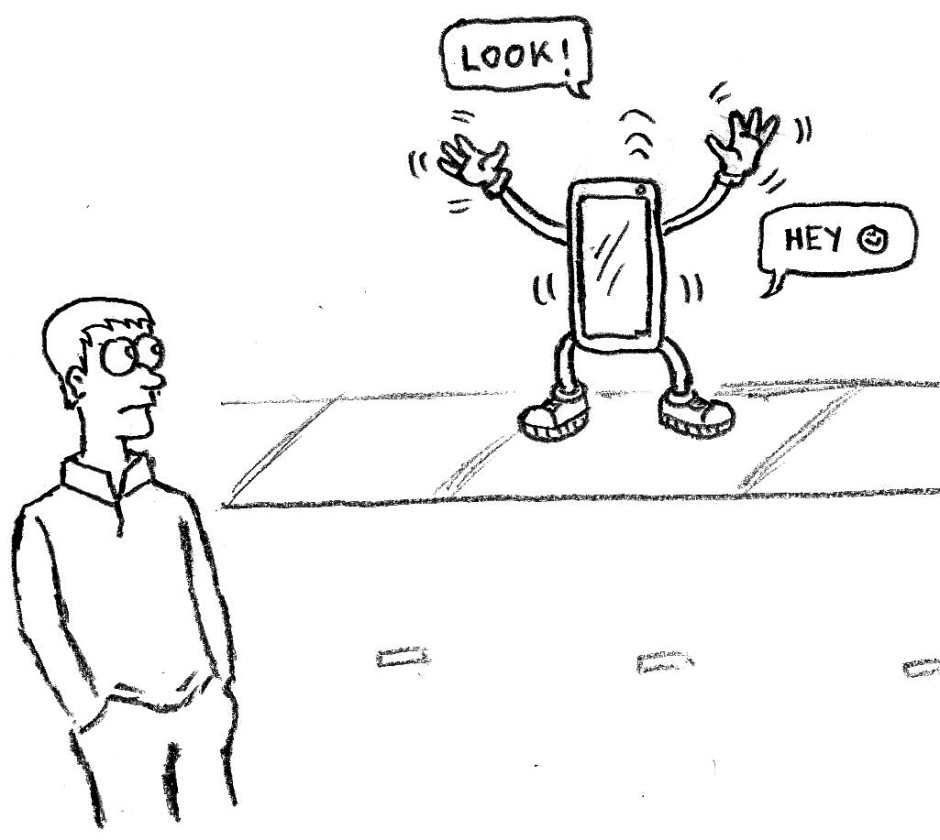
Now, take these distractions and imagine that the average remote worker does not have the luxury of a defined work schedule that comes with working in an office. Many remote workers have the opportunity to create their schedules and work at their own pace.
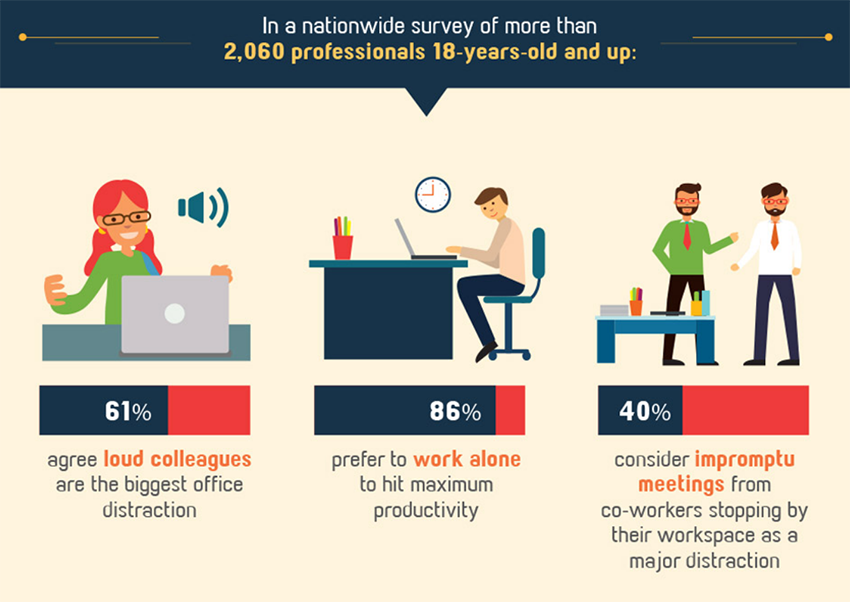
This situation is a benefit, but it can also bring difficulty in navigating distractions the average office worker faces while continually being exposed to home errands, chores, the needs of spouses and children, as well as a less defined schedule. Remote workers have to walk a stressful fine line between work priorities, constant demands of the home, and online distractions.
Speaking of home, the unique setting of working from home can bring its own set of distractions that can pull the remote worker away from what they need to accomplish. These scenarios may seem mundane, or unrelated, but many of us can likely think of moments like these:
- You are right in the middle of a meeting, and your eye catches a hamper of clothes you forgot to take to the laundry that weekend.
- As you walk into the kitchen to make lunch for the day, you see a sink full of dishes that someone forgot to handle.
- Your spouse or partner is away at work, and you have to manage the workday while taking care of a sick child or relative.
- Your house is going through a renovation or in need of repair, so most of your day will be interrupted by a plumber, exterminator, and construction crew.
These are all situations that occur across the country for many remote workers, and the challenge comes in having to find a way to work through this and accomplish personal tasks while staying focused on work projects. These situations are obstacles that a savvy remote worker can overcome. However, due to a lack of time management skills or the unforeseen nature of these events, these problems can become productivity dangers.
Productivity dangers are when a time management obstacle like dirty dishes, overbearing email notifications, or a general lack of scheduling hinders your work progress. You are unable to move forward and accomplish what you set out to get done. This also can come in the form of when the noise from the construction or renovation prevents you from conducting a meeting or webinar, so you have to reschedule, or when checking the constant barrage of email or Slack notifications keeps you from taking a step back to schedule your day.
Productivity dangers are everywhere, and they can produce a lot of negative feelings and side effects in the life of any remote worker. To understand the importance of creating a plan to better tackle productivity dangers and bring more organization into your work-life balance, it is worth discussing the problems that arise when you don't make planning and strategy a priority.
The Harmful Impact of Productivity Dangers
A lack of productivity and struggles with time management can have a harmful effect on any remote worker. Below are some of the issues average workers face as a result of productivity dangers.
Stress

According to a 2017 American Psychological Association study, work came in third as the most common source of stress (61 percent). In 2014, work overload was listed as one of the primary factors for job-related stress. Digging a bit deeper, a survey by ComPsych Corp found that 20 percent of the cause of workplace stress was juggling work and personal lives. These statistics reveal the robust connection between work tasks and work-life balance with stress. Workers are having a problem managing it all, and this is even more apparent for today's remote worker.
Higher Costs
A lack of productivity doesn't just impact a worker's stress level; it can also have a profound impact on their bank accounts and the pockets of their employers. While remote and office workers may not mean to become disengaged, distractions can lead to it. According to Gallup, actively disengaged employees cost the U.S. $450 to $550 billion per year in lost productivity. Also, the average business with 100 employees spends 17 hours clarifying communications a week translating to a cost of $528,443. Even on a smaller scale, distractions that come in the form of email overload, constant phone calls, or home tasks takes remote workers away from money-making activities, naturally reducing revenue.
Process Inefficiencies
Think about it, when you have no way of handling distractions or optimizing productivity, efficient work processes are non-existent. A lack of productivity is typically due to reactionary methods instead of proactive strategies. For example, instead of creating a process where you take the first day of the week to develop a personal errand calendar to integrate with your work task list, you deal with chores and errands as they come. This process is inefficient, one that takes you away from work and keeps you from adequately accomplishing your goals. As a result, a lack of productivity is typically always linked to process inefficiencies.
Poor Customer Service
Now, take a moment to think of all the times you have been a customer to a company where employees were routinely known to multi-task to a fault. Did it ever end up well for you as the customer? When productivity lacks, it impacts everyone involved, including customers and clients. A hit to productivity can prevent work from being produced on deadline, finished projects that include mistakes, and even potential project or task failure.
For example, you may feel the need to implement weekly check-in calls during peak business hours in addition to Monday morning meetings. This tactic seems great on the surface, but you fail to see how this one change can impact everyone's productivity for the worse. Employees now have less time to be accessible to their customers, and now you have given them another task to prepare for, a well-meaning but detrimental distraction.
Low-Quality Work
A lack of productivity almost always results in a low quality of work. Think about the last time you were hard-pressed to meet a deadline. It is likely that something along the way impacted your productivity. It could have been a heavy workload, multiple unnecessary meetings, a change in client demands, an unending stream of emails, or general burnout. Whatever the case you are now up against the wall and have to produce something.
An extension may not be an option, so you push through. However, along the way, you make mistakes and forget to take all the specifications into account. Likely, though you did everything in your power to prevent this, your project does not reflect the quality at which you typically work. A well-crafted plan for handling situations that threaten your productivity could have prevented this.
Low Morale
Contrary to what leadership may think, it is safe to assume that most workers want to go a good job. They want to help their teams achieve success as well as accomplish their own goals in the process. Something that can derail this motivation and decrease morale is low productivity. When you feel you cannot get a handle on your schedule, it impacts you negatively. It makes it hard to do the work you do, which makes it unenjoyable and a chore. This will have a substantial effect on your work outlook as well as how you interact with coworkers and employees.
As humans, we are wired to accomplish tasks and get things done. When that process is slowed or stopped, it can cause our morale to drop significantly. Imagine not being able to answer client phone calls because you are too busy answering emails. Think about how you feel when you have to reschedule a meeting—which pushes back a deadline—because a personal errand can no longer wait. Even if the lack of productivity is your own doing because social media is a bit more alluring than work, the feeling is still likely to be negative.
There are many less than favorable effects of productivity dangers. However, to adequately prepare for how to deal with them, you have to understand what they are. Next, we will identify these harmful productivity dangers as well as discuss tools for creating a strategy to address them.
Common Productivity Dangers
Sensory Overload
Today, adults are spending an average of 10 and a half hours a day looking at screens. Couple this with the fact that adults also regularly use an average of 3.64 devices each day, and it is not surprising to think that many of us are suffering from sensory overload. It is so easy to become distracted or generally overwhelmed by the number of devices, applications, and websites available to us on a daily basis. How in the world do you keep it all straight and stay on task when it is so easy to check that Facebook notification or breaking news pop-up?
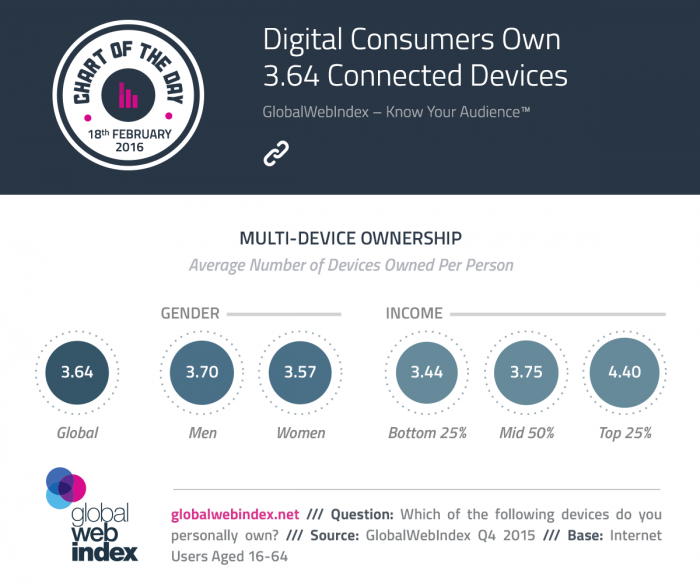
A Solution for Dealing with Online Distractions
First, one of the best things you could do is turn off all unnecessary notifications until after your workday is complete. Whether it be Facebook, Twitter, Instagram, or your favorite news or media site, it is not a requirement to allow for alerts for these applications throughout the day. It is human nature to want to look at these notifications as they come in, but you can drastically diminish your response to these by turning them off. Take some time to see how much time a day you spend on various applications.
You may be surprised at the amount of time you spend on social media or other sites. Knowing can help you then decide on a strategy to tackle this problem. Now, if doing this yourself is a challenge, there are some steps you can take with the right technology solution. HeyFocus is an excellent tool for blocking out apps and distracting websites if you are on a Mac computer. A great alternative if you use PC is StayFocused is a Chrome extension that allows you to do the same during the workday. Apps like these can take away the worry of managing this problem yourself.
Responding to Emails
Again, the average worker spends a quarter of their week reading and responding to emails. Each time you hear the ping of your email client, you are tempted to take a look and handle the problem at that time. The issue with this is that it can require a response or conversation that will take longer than what you have time for at that moment. There are two ways you can tackle this potential problem.
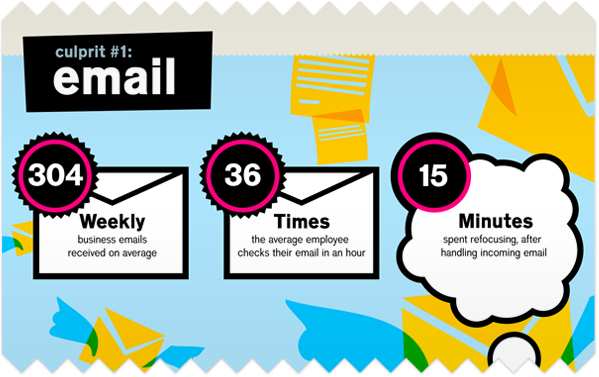
How to Better Organize Your Response to Emails
First, you need to create an efficient process for checking emails. This action should prioritize setting a set time during the day to tackle prioritized emails. Instead of addressing this early in the morning, it might be better to save this until the end of the day or carving out an hour block around the middle of the day to respond. The goal is to find a more efficient time during your day to check your email, so it does not distract from the rest of your work. Second, you should look into a digital solution for organizing emails in a way that helps you handle the most pertinent issues first. Edison Mail and Gmail are excellent tools you can use to automatically organize your emails into groups that help you quickly manage a response strategy.
Procrastination
Many times, we do not actively choose to procrastinate. Whether you have to meet multiple deadlines, are faced with an unexpected meeting, or have a personal errand that can no longer be ignored, procrastination can come to the best of us. Waiting until the last minute to do something can be a survival tactic, but it doesn't have to be. There are strategies you can put into place to help you overcome the struggles of procrastination due to the demands of working from home.
Overcoming the "Last Minute" Rally
The first answer to dealing with procrastination is strategy and planning. One of the best ways to prevent a looming deadline is to understand how long it takes to complete special projects and specific work tasks. Knowing this information helps you to prioritize work activities that may take more time over those that may be just as important but take less time and energy. This can help when you are in a pinch and have to shift from a work activity to a home-related one quickly.
A technology solution you should check into is Procraster , an app that help with the logistical issues of procrastination. Procraster addresses many of the reasons you decide to put off a task. For example, you can select options like "My task is too big," "I have to be perfect," "I don't know where to start," and many others. Depending on the option you select, the app will break down the problem and walk you through the best way to tackle the situation. With some planning and a little advice and motivation, procrastination does not have to define your work-at-home life.
Household Management
Slacking on household tasks is never ideal, but it happens. Having to juggle work projects, meetings, and daily chores can be hard to do. It may feel as if you are never able to stay on top of anything. The other aspect of household management is staying connected with partners, spouses, and children. What if a child is sick and needs personal attention and you have a tight deadline? What if work hours start to infringe on time you are spending with your family? Separating home and work becomes difficult as a remote worker, and it can have a negative impact on your productivity.
Striking a Balance Between Home and Work
One of the easiest ways you can begin to separate home from work is by setting physical and intangible boundaries. First, you should have a dedicated workspace (preferably with a door). This allows you to mentally separate your work life from home life while being able to have an area to work without interruption. Second, communication is vital. Work with your spouse and family to discuss times when you are off the clock and when you need complete focus.
This scenario may also include having conversations with clients if you are dealing with an emergency like having to take care of a loved one or needing to run an errand. If the week looks hectic, see if you can modify your hours. You should have an emergency plan if a personal or home-related situation arises. One of the best tools to use for home management is a digital calendar. Use Google or Microsoft Calendars to create itineraries for home, social, and work. You can then integrate these calendars to get a sense for how your work and personal life fit together.
Lack of Organization
Some of us are master organizers, while others of us could use a little work. The skill of organization can be a tough one to master. The more responsibilities you juggle, the harder it is going to be to keep things neat and organized. Many remote workers likely struggle with two types of organization: space and task. If you are someone that likes to use a lot of paper and notebooks, then keeping everything straight will be a challenge. On the other hand, if you are managing multiple projects and have a penchant for taking a lot on at one time, then task organization may also be hard for you. Many of the above problems can be handled with greater attention to organization.
How to Re-organize your Work Life
Finding a report amongst a desk full of papers, folders, and post-it notes can drain precious time. To solve this problem, an easy and secure way to better organize your space is to switch any paper documents to an online database or record. Go further in conserving space by taking stock of what you actually need. Can you replace your scanner with a mobile app? Do you need that corner bookcase? Could you substitute a larger seat with a smaller and more ergonomic chair? Look at your space and see how you can downsize or restructure it.
The task organization component can benefit from a technological solution. A task or project management system is perfect for better prioritizing and organizing your duties for the week. Tools like Asana, Trello, and Wrike allow you to delegate tasks, organize duties by priority, track progress, and strategize with Gantt or Kanban project views. Using a digital tool to organize your week can significantly reduce missed deadlines and make work more efficient and enjoyable.
Team and Client Meetings
As a remote worker, you know all too well that meetings will take up a large part of your weekly schedule. The structure of remote work requires it. While you lose the workplace distractions and pick up some autonomy and solitude, you also no longer have the luxury of walking over to your coworker's cubicle or desk to clarify something. These days, you have to work with your team to plan the best time to discuss projects. Also, depending on the communication tendency of those you work with, some may be more prone to schedule a large number of meetings during the week. So, how can you best handle team and client meetings throughout the week?

Better Managing Those Meetings and Conferences
One reason meetings and plans for discussions go awry and begin to take away from your productivity is a lack of communication. First, you should always make sure you inform your team and clients of the times you are on and offline. They should always know when you start work and when you are offline, as well as when you have to augment your hours. This act can give them valuable information on when to ask for time to meet with you. Another tactic you should take is letting individuals know how much of an advanced notice you need before a meeting is scheduled.
Regarding technology, there are apps and software programs that can rectify this issue. Calendly is an excellent tool for effectively managing your meeting schedule. This app will read your schedule and select times from your calendar that are open for meetings. Team members or clients interested in meeting with you can pick designated times from your schedule. It can even add in buffer times between appointments or work times, so your schedule does not feel too compressed. Doodle and Acuity Scheduling are also sufficient options for better managing your calendar.
Burnout and Fatigue
Nothing can take a more substantial hit to your productivity than burnout and fatigue. As a remote worker, you can likely relate to feeling your energy level take a nosedive when an eight-hour workday creeps up to 12. Workers around the world are feeling the same. According to a study by Yale, one in five highly engaged employees is also experiencing high burnout. Many things can lead to exhaustion, and understanding them can help combat it. Work overload, a lack of control, a failure in collaboration, and many other work-related issues can lead to feelings of fatigue. There are ways to avoid this feeling, and you can start by developing methods for healthily handling your work life.
How to Ward Off Burnout
Again, like many of the issues on this list, burnout is a byproduct of a lack of communication. If it is related to workload, you may want to have a conversation with your manager or team lead about re-examining your work tasks for the week. With issues like lack of control or feeling unappreciated, merely having a discussion with your manager and team members can go a long way and even reveal problems others may be having. Because of the lack of socialization with your team, it is many times necessary to over communicate, so if you are finding that burnout and fatigue are becoming a regular part of your work life, it is time to start the conversation with your team.
There are a couple of ways to approach burnout with the help of technology. The first is to implement many of the tools already mentioned to better organize your workload and meeting schedules. The second is to find solutions that encourage you to take breaks. Apps like Headspace and Calm allow you to practice mindfulness and calming techniques that decrease stressful thinking, while TimeOut and many Pomodoro style apps help you schedule breaks throughout the day to rest your mind.
Document and Password Organization
As a remote worker, your working life is strictly online. Therefore, it is likely that your files and passwords are growing each day. After a while, it can become overwhelming to keep track of your most essential data and passwords (especially those you may not use as frequently). One of the most important reasons to pay attention to password organization comes down to security. In 2014, two in five people had an account hacked and a password stolen. Also, 21 percent of people use passwords that are over ten years old. Today, many of us likely feel too busy to pay attention to this, but a breach in security as well as searching all over the place for a password or file can bring a big dip in productivity.
Bringing Some Organization to Password and Document Management
Regarding document management, a naming convention and intentional folder creation can do a long way. You should organize all your documents by their level of priority to you, and place them in folders that are also named accordingly. This simple step can make life a lot easier. Regarding password organization, you should always make a point to change your passwords at least every six months to add a bit more security to your accounts. For quick and efficient password management, LastPass and Roboform are free options for organizing and saving passwords with the use of a master password.
Lack of Efficient Task and Project Delegation
How do you decide when a project takes priority over another? How do you know the amount of time you should set aside for daily task and long-term plans? What does efficient task planning even look like? Whether you are a remote worker or still in the office, everyone has likely had these questions, and they are not abnormal. According to the Standish Group, fewer than a third of all projects were completed on time and budget in 2016. This statistic means that many individuals across the country are having issues effectively managing their project load. While there is never an instant solution, a well-thought-out strategy that is given the time to develop and evolve can help add efficiency to task and project delegation.
Creating a Better Environment for Project Management
Two of the most important remedies for unstable project management and poor delegation is communication and strategy. Take time to observe yourself as well as your team in how you all work through the day. Are specific tasks taking longer to finish than others? Is there a lack of communication that is making it hard for individuals to complete projects? Are there technical issues that are preventing effective task delegation? Before making a plan, ensure you see where the problems are, and plan accordingly. Concerning technology, time tracking software like Harvest can help you understand how long specific tasks are taking you and your team. You can then begin to give priority to projects that may take a bit longer while assigning less intensive tasks and projects in a way that compliments larger assignments. Asana and Trello both allow you to efficiently delegate projects to team members, as well as monitor their progress to completion.
Extreme Multitasking
We are all guilty of this, especially as location-independent workers. We are used to juggling family, professional, and work life. However, just because we can, doesn't mean we should. Many of us think we are masters at this skill, but studies show this is not the case. It is estimated that only two percent of the population are skilled at multitasking. For those who us who are not in this group, data also shows that 40 percent of productivity is lost to task switching. The costs are high for indulging in the temptation to work on more than one thing at one time. However, there are better ways of handling your workload without multitasking.
A Strategy for Preventing Multitasking
In today's world, our work life is fast-paced. We can check our work emails while we fold laundry, or prepare dinner while participating in a conference call. Again, even though technology makes scenarios like this possible, it doesn't mean we should indulge. Multitasking actually decreases our productivity and causes us never fully to give our attention to the task at hand.
A great way to prevent this is by better prioritizing your task (professional and personal) and listing them by importance. By organizing by priority on the front-end, you can avoid the need to work on two things at the same time. Create time in your schedule for laundry, food prep, or an errand run. A Pomodoro-style app can help you break single-tasks into smaller manageable tasks that increase your productivity. A combination of this with a to-do list app like Evernote and Todoist allows you to prioritize task and only work on one project or task at a time.
Final Thoughts
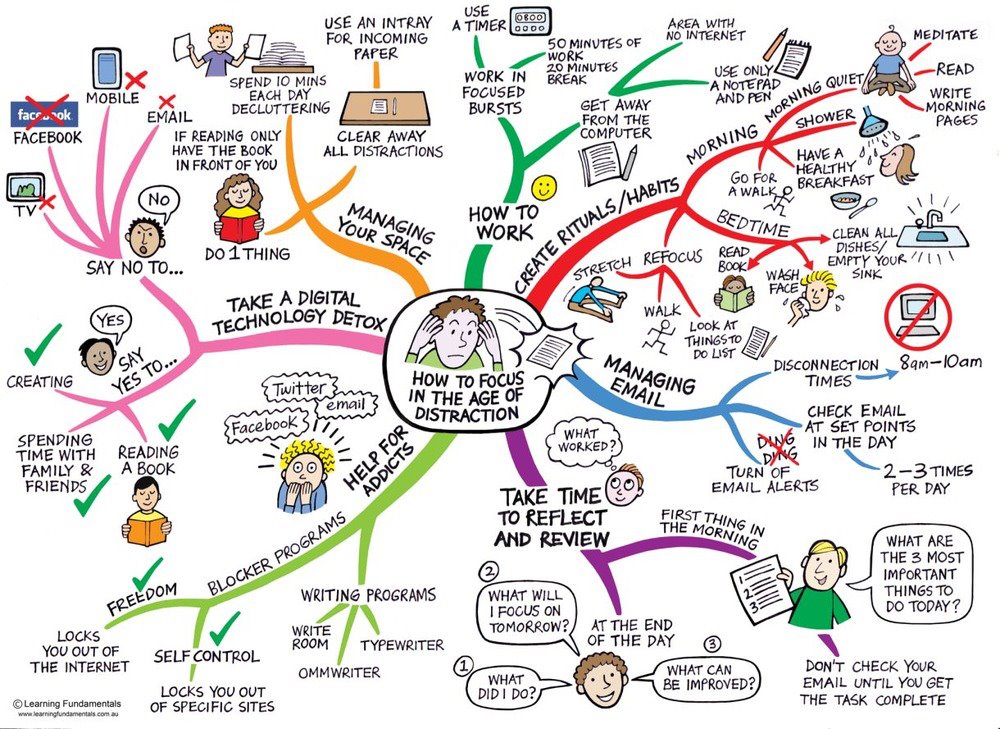
(Source: Effective Software Design)
Whether you realize it or not, you have gotten the opportunity to have an ideal working arrangement that works for you. In some way, you recognized that working in an office brought many distractions, took a hit to your productivity, and was not the best place for you to be at your creative best. So, you decided to do what many Americans are doing and create a home office where you can be at your highest peak of performance. However, while many advantages come from working at home, there are also problems any diligent and dedicated remote worker will encounter. Being location-independent brings its own set of challenges and distractions that savvy remote workers have to be prepared to deal with. Each one, if not acknowledged, can be a detriment to productivity.
Addressing the impact recurring distractions are having on your productivity has to become a consistent practice. There are two ways workers can adequately improve their productivity and ward off distractions. The first is recognizing the importance of solid planning and the incorporation of a practical technology solution to handle the productivity problems you encounter in your work. The next is taking the step to create a strategic improvement plan. A strategic improvement plan requires you to take note of where your most significant distractions are, the collective impact they are having on your productivity, and your strategic and technological solutions for solving the problem. Begin to measure the amount of time you check emails, use apps that monitor the frequency at which you access social media, and track how many times you have to stop and handle household errands. Keeping a watchful eye on the distractions around you and how they impact the time it takes to complete your work task is a pivotal step in the strategic improvement plan process.
You made a great decision in deciding to become location-independent by making your home (coworking space) your base for work. Make sure you are planning for all the issues that can arise so you can realize all the benefits that come from remote work.
